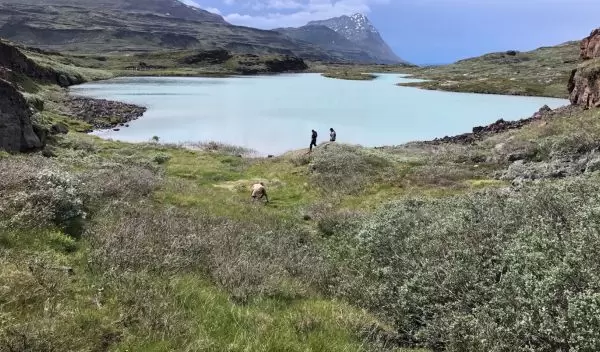
Rewriting the history books: Why the Vikings left Greenland
One of the great mysteries of late medieval history is why the Norse, who established successful settlements in southern Greenland in 985, abandoned them in the early 15th century.
The consensus view has long been that the colder temperatures of the Little Ice Age helped make the colonies unsustainable. However, new research, led by scientists at the University of Massachusetts Amherst and published in Science Advances, upends that theory. It wasn't dropping temperatures that helped drive the Norse from Greenland, but drought. The research was supported by the U.S. National Science Foundation.
"The team found no substantial temperature changes, but found a persistent drying period," says Colene Haffke, a program director in NSF's Office of Polar Programs.
When the Norse thrived in Greenland in what they called the Eastern Settlement in 985, they made their way by clearing the land of shrubs and planting grass as pasture for their livestock. The population of the Eastern Settlement peaked at around 2,000 inhabitants but collapsed quickly about 400 years later.
For decades, anthropologists, historians and scientists have thought the Eastern Settlement's demise was due to the onset of the Little Ice Age -- a period of exceptionally cold weather, particularly in the North Atlantic, that made agricultural life in Greenland untenable.
However, as Raymond Bradley, a geoscientist at the University of Massachusetts Amherst and one of the paper's co-authors, points out, before this study, there were no data from the actual site of the Viking settlements.
Instead, the ice core data previous studies had used to reconstruct historical temperatures in Greenland were taken from a location that was more than 1,000 kilometers to the north and more than 2,000 meters higher in elevation. "We wanted to study how climate had varied close to the Norse farms themselves," says Bradley. The results were surprising.
Bradley and his colleagues traveled to a lake called Lake 578, which is adjacent to a former Norse farm and close to one of the largest groups of farms in the Eastern Settlement. There, they spent three years gathering sediment samples from the lake, a continuous record for the past 2,000 years.
It turns out that Norse farmers had to overwinter their livestock on stored food, and even in a good year the animals were often so weak they had to be carried to the fields once the snow melted in the spring. Under such conditions, the consequences of drought would have been severe. An extended drought, on top of other economic and social pressures, may have tipped the balance just enough to make the Eastern Settlement unsustainable.


